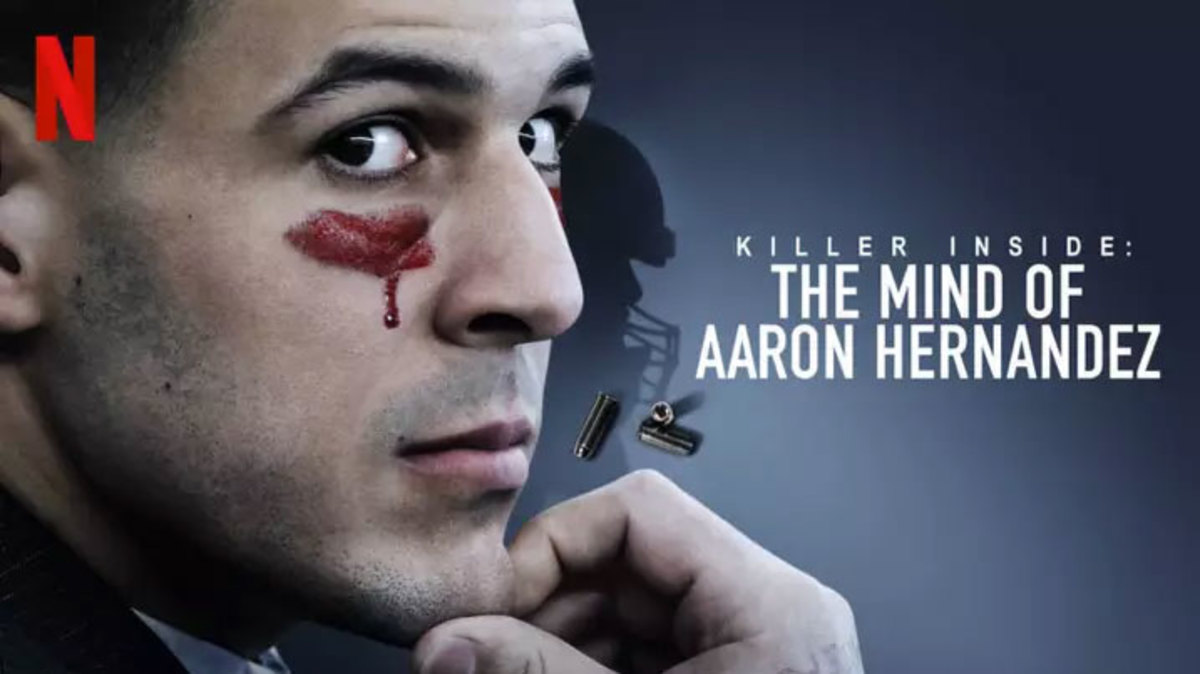Unwelcome Revisit: Aaron Hernandez Netflix Docuseries Relies Too Much on Speculation

In Week 17 of the NFL season, the 5–10 Jaguars and the 7–8 Colts met for a meaningless contest. Neither team was in playoff contention; both were ailing. What could such a game, even under the best circumstances, have to offer fans? Still, there was a broadcast window to fill and tickets to sell, so the game went on.
A few weeks later, I was put in mind of that matchup while watching the new three-part Netflix docuseries, Killer Inside: The Mind of Aaron Hernandez, which was about as enervating, though at three hours and 20 minutes, also 14 minutes longer than Colts-Jags. Why is this story being told again? The docuseries (which is directed by Geno McDermott and lists SI writer L. Jon Wertheim as an executive producer) covers how Hernandez, then a star 23-year-old tight end for the Patriots with a $40 million contract, was charged with first-degree murder in June 2013 after the shooting death of an acquaintance, Odin Lloyd. A cascade of circumstantial evidence in the days following the charge made Hernandez look not only guilty but also sloppy, and soon enough he had been credibly accused of involvement in an unsolved 2012 double murder. In 2015 Hernandez was convicted of Lloyd’s murder and sentenced to life in prison. Two years later, and just five days after being acquitted of the ’12 murders, Hernandez hung himself in his cell at Souza-Baranowski Correctional Center in Lancaster, Mass.
Back then, the public was naturally fascinated with his case, which re-raised a number of age-old questions about the corrupting power of athletic gifts and celebrity. And as America learned more about Hernandez’s past—the beatings at the hands of his father; molestation at age six; concealed affairs with men throughout his life; his residing in a near-constant state of intoxication; a hyper-advanced case of CTE—the inexorably hazy picture that emerged was no longer that of an aspiring crime boss but of a wounded and paranoid young man who turned to violence because of poor impulse control, and because it was the tool closest at hand.

Which returns us to the question of why this series exists. The details about Hernandez’s life which emerged after his death made his crimes easier, not harder, to comprehend. And more to the point, most of that surfaced by way of a Boston Globe Spotlight investigation and accompanying podcast in 2018, which interviews a wider range of subjects than Killer Inside does. While the series makes effective and haunting use of Hernandez’s prison phone calls with friends and family, it suffers from a distracting over-reliance on voices (an ex-Patriot who didn’t play with Hernandez, childhood friends, a once-closeted ex-NFLer) who can only speculate about his motivations and inner torment. And the series’ gestures at blaming big-time college and pro football feel perfunctory. (One subject’s contention that the Patriots should have reported Hernandez’s fear for his life to law enforcement is so regressive it’s hard to know where to start.)
Killer Inside’s shortcomings are not unique but rather those of much of the true-crime entertainment produced recently. Homicide is tragic and, when fame is involved, intriguing—but it is not always profound. The world is full of new and uplifting stories waiting to be told. Market trends shouldn’t compel the dredging up of this tired and dismal one.
This story appears in the February 2020 issue of Sports Illustrated. For more great storytelling and in-depth analysis, subscribe to the magazine and get up to 94% off the cover price. Click here for more.
